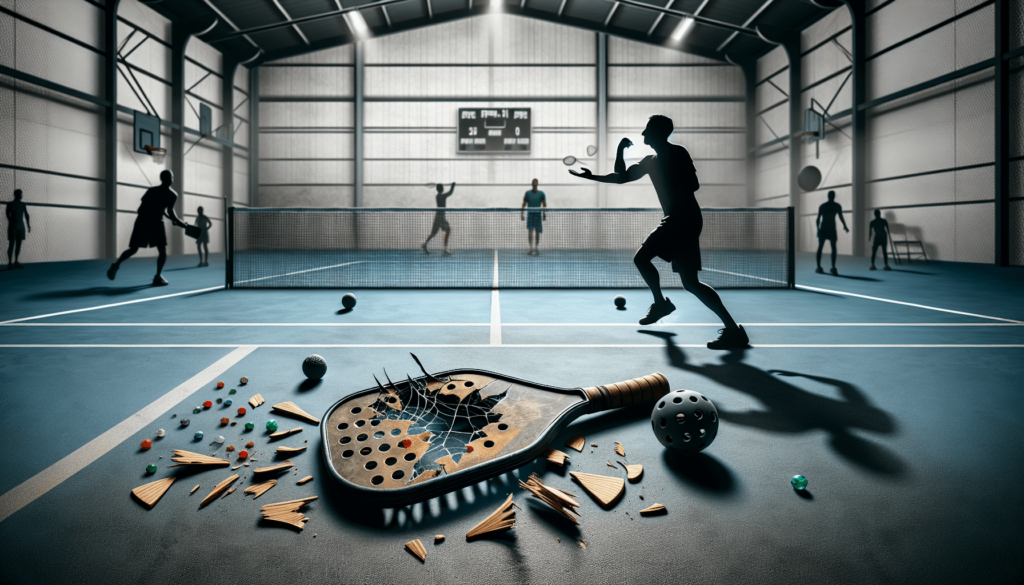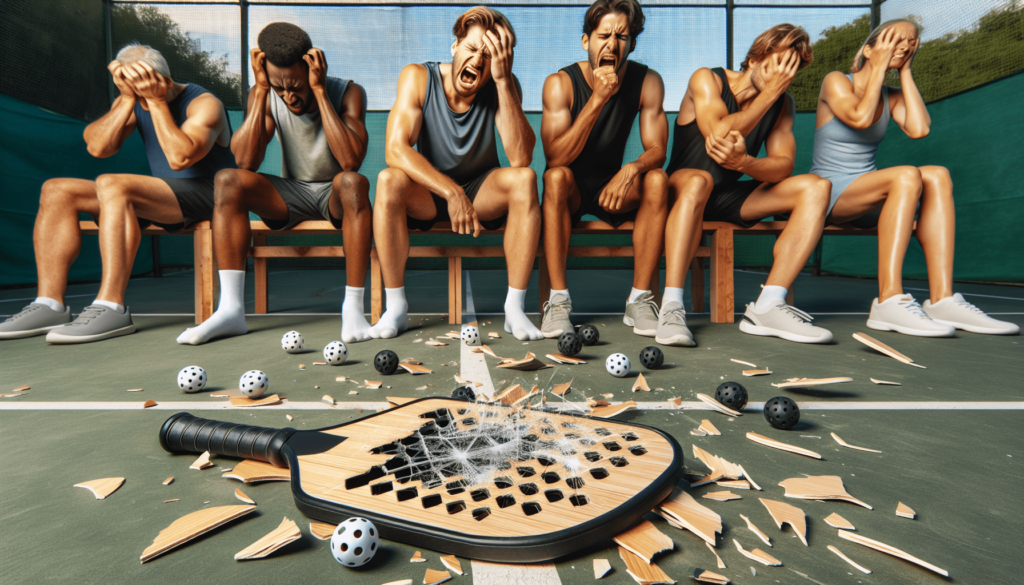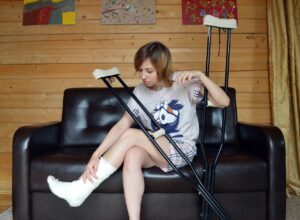Pickleball, a thrilling and fast-paced sport that combines elements of tennis, badminton, and ping pong, has been gaining popularity around the world. However, with its rise in fame comes an alarming increase in the number of injuries reported among players. So, why are there so many injuries in pickleball?
From strained muscles to twisted ankles, the courts are becoming a breeding ground for mishaps. In this article, we will explore the reasons behind the prevalence of injuries in pickleball and provide valuable tips on how to prevent them, ensuring your enjoyment on the court remains injury-free. So grab your paddles, and let’s dive into the world of pickleball injuries.
Improper Technique
Lack of Proper Grip
One common reason for injuries in pickleball is the lack of a proper grip on the paddle. When you hold the paddle incorrectly, it can lead to wrist and forearm strain, making you more susceptible to injuries. To prevent this, it is crucial to learn the proper grip technique and ensure that you have a firm hold on the paddle throughout the game.
Incorrect Swing Mechanics
Another factor that contributes to injuries is incorrect swing mechanics. If you swing the paddle with improper technique, it can strain your shoulder, elbow, and wrist joints, leading to overuse injuries and muscle imbalances. To avoid these issues, it is essential to learn and practice proper swing mechanics under the guidance of an experienced coach or instructor.
Inadequate Footwork
Improper footwork can also increase the risk of injuries in pickleball. Quick lateral movements, sudden stops, and pivoting can put excessive pressure on your feet, ankles, and knees. To minimize the chances of foot and ankle injuries, it is crucial to work on your footwork, including proper positioning, balance, and agility. Regular footwork drills can help improve your overall stability and reduce the risk of accidents on the court.

Overuse Injuries
Repetitive Stress on Joints
Pickleball involves repetitive movements such as swinging the paddle, running, and jumping, which can lead to overuse injuries. Constantly repeating these motions without proper rest and recovery can put a strain on your joints, especially the knees, shoulders, and elbows. To prevent overuse injuries, it is important to listen to your body, take regular breaks, and incorporate strength and conditioning exercises into your training routine.
Muscle Imbalances
Overuse injuries can also result from muscle imbalances. Certain muscles may become excessively strong and tight while others remain weak and underused. This imbalance places additional stress on the joints and increases the risk of injuries. Including exercises that target all major muscle groups and promote overall strength and flexibility can help prevent muscle imbalances and reduce the likelihood of overuse injuries.
Tendonitis
Tendonitis, an inflammation of the tendons, is a common overuse injury in pickleball. The repetitive nature of the game can lead to the development of tendonitis in areas such as the elbows (tennis elbow) or the shoulders. To avoid this condition, it is important to gradually increase your playing time, warm up properly, and incorporate stretching and strengthening exercises specifically targeting the tendons.

Lack of Warm-up and Stretching
Failure to Warm-up
Skipping warm-up exercises before playing can significantly increase the risk of injuries in pickleball. Without proper warm-up, your muscles and joints are not adequately prepared for the physical demands of the game. Warm-up exercises should include light cardio to increase blood flow, dynamic stretches to improve range of motion, and specific warm-up drills to prepare your body for the movements required in pickleball.
Neglecting Stretching Exercises
In addition to warm-up exercises, neglecting stretching exercises can also contribute to injuries. Stretching helps improve flexibility, increase muscle length, and reduce muscle tightness. By incorporating both static and dynamic stretches into your pre and post-game routine, you can enhance your overall performance and reduce the likelihood of muscle strains and sprains.
Inadequate Protective Gear
Absence of Knee Pads
Pickleball involves quick movements, sometimes involving diving or sliding to reach the ball. Without knee pads, your knees are susceptible to abrasions, bruises, and other injuries when making such movements. Wearing knee pads provides an added layer of protection, reducing the risk of traumatic injuries and allowing you to move confidently on the court.
Lack of Elbow Braces
For players who are more prone to overuse injuries or have a history of elbow problems, wearing elbow braces can provide essential support and stability. Elbow braces help reduce the strain on the tendons and alleviate pain associated with conditions like tennis elbow. Incorporating elbow braces into your playing gear can help prevent long-term injuries and promote a healthier playing experience.

Age and Fitness Factors
Decreased Bone Density
As we age, our bones tend to become less dense, making them more vulnerable to fractures and other injuries. In pickleball, falls, collisions, and high-impact movements can put stress on your bones, increasing the risk of fractures, especially in older players. It is crucial for players of all ages to consult with a healthcare professional, maintain a healthy bone density through proper nutrition and strength training, and be mindful of their limitations on the court.
Reduced Flexibility
With aging and a sedentary lifestyle, flexibility tends to decrease, making it more challenging to perform certain movements on the pickleball court. Limited flexibility can increase the risk of muscle strains, pulls, and other musculoskeletal injuries. Regular stretching exercises, including both static and dynamic stretches, as well as practicing yoga or Pilates, can help enhance flexibility and reduce the chances of injuries caused by restricted range of motion.
Poor Playing Surface
Uneven Courts
Playing on uneven courts can be a significant hazard that increases the risk of injuries. Uneven surfaces can cause players to trip, lose balance, or twist their ankles, leading to sprains, strains, or even more severe injuries. It is important to choose well-maintained and properly leveled courts whenever possible. If you notice any unevenness, notify the court management or take appropriate precautions to avoid potential accidents.
Slippery Surfaces
Slippery surfaces, whether caused by rain, mud, or improper court maintenance, can greatly increase the chances of falls and injuries. It is crucial to avoid playing on wet surfaces and ensure the court is clean and free from any substances that could cause slippery conditions. Wearing appropriate shoes with good traction can also help improve grip and stability on the court, reducing the risk of slipping and related injuries.

Competitive Nature of the Game
Intense Gameplay
Pickleball can be an intense and fast-paced game, especially during competitive play. The high speed of the ball, quick reactions, and significant physical exertion put players at risk of accidents and injuries. It is important to understand your limits, pace yourself accordingly, and gradually build up your intensity and endurance. Avoiding exhaustion and maintaining proper hydration throughout the game can also help prevent mistakes and reduce the chances of injuries.
Risk-taking Behavior
The competitive nature of pickleball can sometimes lead players to take unnecessary risks, attempting shots that are beyond their skill level or putting themselves in precarious positions on the court. Engaging in risk-taking behavior can increase the likelihood of accidents, collisions, and injuries. It is crucial to recognize your abilities, play within your limits, and prioritize safety on the court.
Lack of Experience and Training
Novice Players
New or novice players who are unfamiliar with the rules and techniques of pickleball may be more prone to injuries. Without proper knowledge of game strategies, footwork, and shot execution, novice players may struggle to maintain control and balance, leading to falls or collisions. Seeking instruction from experienced players or professional coaches and dedicating time to practice and learn the fundamentals can help novice players gradually improve their skills and reduce the risk of injuries.
Insufficient Coaching
Even experienced players can benefit from proper coaching and guidance. Lack of coaching can result in improper technique, inadequate conditioning, and poor game strategies, increasing the likelihood of injuries. Having a knowledgeable coach who can provide feedback, suggest improvements, and help identify and correct any shortcomings can greatly contribute to a safer and more enjoyable playing experience.

Physical Contact and Collisions
Accidental Contact
In the fast-paced nature of pickleball, accidental contact between players can occur. Collisions can lead to injuries such as bruises, sprains, or even more severe trauma. It is important to be aware of your surroundings, communicate with your partner and opponents, and practice good court etiquette to minimize the risk of accidental contact. Respectful and considerate play can help prevent unnecessary injuries.
Collisions during Doubles Play
Doubles play in pickleball often involves coordination and teamwork between partners. However, miscommunication and poor coordination can sometimes result in collisions, especially when both players are going for the same ball. Collisions can lead to injuries such as falls, twisted ankles, or collisions with the net. Open communication, clear signals, and practicing effective teamwork can help prevent collisions and create a safer playing environment.
Prevalence of Non-contact Injuries
Ankle Sprains
Ankle sprains are one of the most common non-contact injuries in pickleball. The quick lateral movements, changes in direction, and sudden stops can put excessive stress on the ankles, leading to sprains or twists. Wearing proper shoes with ankle support, performing strengthening exercises for the ankles, and working on balance and stability can help reduce the risk of ankle sprains.
Muscle Strains
Muscle strains, particularly in the legs and arms, can occur when playing pickleball due to sudden or forceful movements. Strained muscles can cause pain, limited mobility, and a decrease in performance. It is important to warm up properly, gradually increase intensity, and strengthen the muscles through targeted exercises to minimize the risk of muscle strains.
Why Are There So Many Injuries In Pickleball
In conclusion, several factors contribute to the high number of injuries in pickleball. Improper technique, overuse injuries, lack of warm-up and stretching, inadequate protective gear, age and fitness factors, poor playing surfaces, the competitive nature of the game, lack of experience and training, physical contact and collisions, and prevalence of non-contact injuries all play a role. By understanding these factors and taking appropriate precautions, players can minimize the risk of injuries and enjoy a safer and more rewarding pickleball experience.

